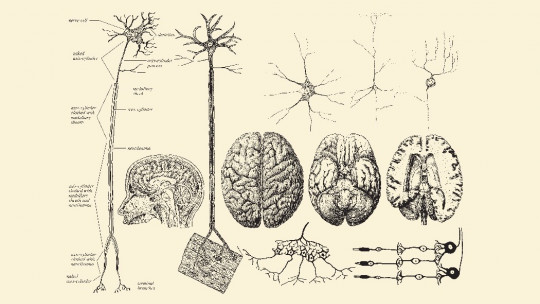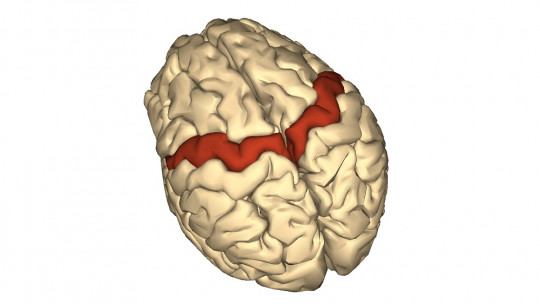Our brain is an organ that, among many other properties, has two fundamental properties for the life of any person: it stores information about events that occurred in the past and is capable of generating a representation of events that may occur in the future. Both faculties allow us to bring to the consciousness of the present moment (update) the representation of past events through the memory, or futures through the imagination
The problem arises when some negative event from the past, or that may occur in the future, repeatedly emerges into our consciousness in the form of a thought and causes psychological disturbance, an afflictive state of mind and suffering. In this PsychologyFor article, we will try to resolve the question of “Why do I have negative obsessive thoughts?
What are unpleasant repetitive thoughts
Any of us has memories of negative situations from the past or concern about a specific situation that may occur in the future, this can be considered “normal”, but if any of these assumptions emerge spontaneously and continuously to our consciousness at any time and place without causing it, altering emotional stability and affecting the normal development of our daily lives, constitutes a disruptive actualizing thought (PPA), so called because to the invading our consciousness generates the same unpleasant emotions and physical sensations as if the disturbing event were happening at that moment (it “updates” them to the present moment). An example of them are:
- “I made a fool of myself in that situation”
- “I could have done more about the illness or death of my loved one.”
- “My action has caused harm to this person and I feel guilty about it”
- “I am sure that I will also suffer from my father’s illness.”
- “I will not have sufficient financial resources when I retire”
- “my parents don’t love me”
- “I will never find a partner”

Negative recurring thoughts: how they work
PPAs can update a disturbing event that occurred in the past to the present: souvenir update (the death of a family member, a romantic breakup, a traffic accident, a compromising or embarrassing situation, etc.); or update a possible disturbing future situation to the present: advance update of a possible unwanted event which would have serious consequences (fear of death, of not finding work, a marital separation, the risk of suffering from a congenital disease, etc.).
PPAs are usually intrusive, recurring, annoying and disturbing, and they are necessarily associated with one or several negative emotions (fear, anxiety, hatred, sadness, guilt, shame, frustration, etc.) that induce the physiological activation that causes the physical discomfort that accompanies them. Furthermore, the PPA creates a psychocentrism on the disturbing event and its circumstances (it focuses attention and mental resources on the problem it represents), leaving aside other aspects of daily life (family, work, social) that offer positive stimuli. and pleasant generators of satisfaction and psychological well-being.
Why disturbing thoughts arise
If we are still wondering “why do I have negative obsessive thoughts “, it is important to know where they come from and how they work. Actualizing disturbing thought (PPA) arises because an event from the past negatively affected some of the factors that influence our mood (refers to the factors of homeostasis psychology proposed by W. Cannon): health, affection, self-esteem, interpersonal relationships, economic resources, self-realization, value system, etc., and caused such an intense psychological impact that it has been recorded in memory in the form of a engram (it is a psychological imprint formed by a network of connections of neurons that form a specific neuronal plot that represents it) that is configured as a emotional marker
The same occurs if, instead of a past event, it is the imagination of a possible future event that could activate one of the emotional markers.
These emotional markers They can remain “inactive” or “asleep” in memory and, when faced with certain stimuli or events of ordinary life, such as an image, a situation, a sound, etc. (although they also “wake up” automatically and for no apparent reason), they are activated and emerge into the consciousness of the present moment in the form of a memory or anticipation, and our mind receives them as current events, thus activating the emotional system and causing the unpleasant physical sensations that generate discomfort in the person (mental disturbance, altered heart rate, stomach discomfort, anxiety attacks, etc.).
In this regard, it is worth remembering that pain, both physical and psychological, is a natural factor in the human biological system that serves as an alert to draw our attention to some aspect that is not working well and encourage us to solve it. In this sense, PPAs fulfill this mission driven by our own mind: restore psychological balance and emotional stability, but, sometimes, they can become a recurring and uncontrolled obsession that generates pain and suffering.
This article is merely informative, at PsychologyFor we do not have the power to make a diagnosis or recommend a treatment. We invite you to go to a psychologist to treat your particular case.
If you want to read more articles similar to Why do I have negative obsessive thoughts? we recommend that you enter our Cognitive Psychology category.








